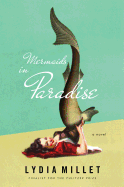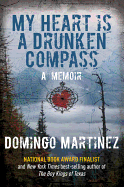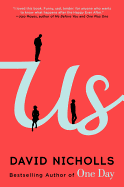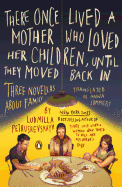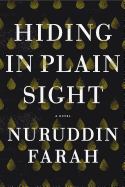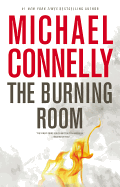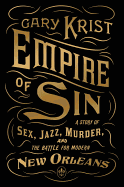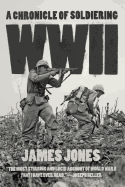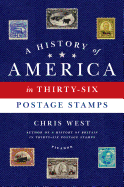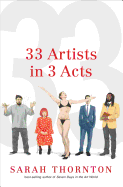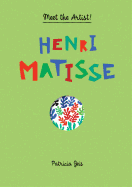Friday, November 7, 2014
After making its debut on Netflix last year, Orange Is the New Black this year was nominated for 12 Emmys (it won three) and renewed for two more seasons. It's safe to say we're hooked on this captivating glimpse of life in prison, and after binge-watching the first season, many viewers picked up Piper Kerman's memoir, on which the series is based.
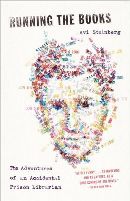
Rene Denfeld works as a death-row investigator, a professional experience that shapes her stunning, imaginative novel, The Enchanted. The book tells the story of a group of death-row inmates by focusing on the prison as a whole, rather than on their individual crimes. With just a touch of the fantastical, Denfeld masterfully brings to light the despair that lurks in one of the darkest places in our society.
Kathy Page's novel Alphabet centers on one inmate, Simon Austen, in prison for murdering his girlfriend. Austen wears his history quite literally on his skin, as he tattoos onto his body all the names and words he has been called: "dumb," "waste of space," "threat to women." As Alphabet tracks his incarceration over many years, what emerges from beneath his crude exterior is not the cold-blooded killer one might expect, but a surprisingly sympathetic character caught in a web of startlingly cruel prison politics. --Kerry McHugh, blogger at Entomology of a Bookworm
Mermaids in Paradise
by Lydia Millet
Lydia Millet's prize-winning work includes literary, political and picaresque novels, YA fantasies, stories and essays. She extends her reach with Mermaids in Paradise, a sparkling comedy of a California couple's journey from marriage to honeymoon to murder mystery to eco-warrior showdown. It reads as if Maria Semple's Bernadette wound up on Gilligan's Island, with a Lord of the Flies misanthropic bent.
Narrator Deb is a sensible, quick-witted woman with an MBA in finance. Her fiancé, Chip, is a good-hearted guy with a taste for video games and mud marathons. Her best friend, Gina, is the cynic, throwing the bachelorette party at a zombie-themed rave and disparaging any honeymoon that treads in the "vast featureless space" of Middle America or takes place on a cruise ship. Chip and Deb land at a resort in the British Virgin Islands, where the always-friendly Chip collects a coterie of new friends that includes a marine biologist, a toe fetishist, a coarse-mouthed retired Navy SEAL, a Japanese TV personality and a paranoid hippie vegetarian.
When the biologist stumbles upon a school of honest-to-God mermaids during a reef dive, Deb and Chip's honeymoon turns into a scientific adventure. They're eager to videotape the mermaids, authenticate the discovery and build a sanctuary--until the biologist is murdered, the resort's owners try to corral the mermaids for a commercial viewing venture, creationists campaign to eradicate these creatures who are "not the work of the Lord... [but] are filth and abomination," the former SEAL foments confrontation, and local militia arrives to referee the melee.
Millet is clever and funny, and she knows the idiosyncrasies of her characters. She even intersperses her tale with typical vacation-like Instagram snapshots of the novel's turning points. Mermaids in Paradise is a smart, good-time mash-up of the undersides of romance, mystery, religious zealotry and eco-tourism. -- Bruce Jacobs, founding partner, Watermark Books & Cafe, Wichita, Kan.
Discover: When a hip young California couple on their honeymoon discover mermaids, Millet's funny new novel takes a turn to sharp satire of creationists, eco-tourists and opportunists.
Us
by David Nicholls
Long-listed for the 2014 Man Booker Prize, Us traces a journey across Europe as well as the topography of a family parting ways for the first time. David Nicholls (One Day) offers a crisp character sketch of a man desperate to save his marriage but clueless as to how.
Now that their son, Alfie, is headed to university, Douglas looks forward to plenty of alone time with his wife, Connie, whom he loves deeply. Connie has other ideas, announcing her intent to leave him right before the family embarks on a grand tour of continental Europe. While she views the vacation as the family's last hurrah, Douglas imagines he can use it to win her back and find a way to connect with the son who's always treated him like a stranger.
In reality, though, matters progress as usual--Alfie is embarrassed by his father, Douglas feels like a third wheel--while Douglas looks back on more than 20 years of married life with increasing bewilderment at their impending end. As the narrator, Douglas shows that he is a man filled with passion but too logical and cautious to express it; his frustration over the inability of his loved ones to see what's in his heart is striking. Douglas is far from one-dimensional, as his wit and humor take him from unlikely to likable hero. Fans of The Rosie Project in the mood for something sadder and deeper should take special notice of this acerbic scientist's struggle to halt the march of change. --Jaclyn Fulwood, blogger at Infinite Reads
Discover: A seemingly passionless man's European tour with his teenage son and soon-to-be ex-wife, from the author of One Day.
There Once Lived a Mother Who Loved Her Children, Until They Moved Back In
by Ludmilla Petrushevskaya, transl. by Anna Summers
It may sound like the tagline of a bland romantic comedy or a think piece on the employment prospects of millennials, but in fact There Once Lived a Mother Who Loved Her Children, Until They Moved Back In is a translated collection by a giant of contemporary Russian literature, the subversive and brilliant Ludmilla Petrushevskaya (There Once Lived a Woman Who Tried to Kill Her Neighbor's Baby).
These three stand-alone novellas are brimming with black humor and bitter sparkle made possible by Petrushevskaya's clear compassion for her characters. They are overworked mothers and battered wives, neglectful and neglected in equal measures. Proud to a fault and disturbingly practical, they make unthinkable choices in the face of unbearable hardship.
In "The Time Is Night," an aging poet handles a seemingly endless number of intergenerational catastrophes. Food is scarce and money is scarcer, but worse than any material hardship is the way her every relationship has soured with bitterness and anger. "Chocolates with Liqueur" is a simpler, if more disturbing, tale. A young man seduces his nurse while recuperating in the hospital, but what seemed like the sweetest of all romances soon turns deadly. "Among Friends" is the most morally ambiguous and striking of the three stories. In it, a woman becomes convinced she is dying of a hereditary disease and takes bizarre measures to ensure her son will be taken care of when she's gone.
English-speaking readers are lucky to have another translation of Petrushevskaya's work at their disposal, and this collection will leave them eager for more. --Emma Page, bookseller at Island Books, Mercer Island, Wash.
Discover: A collection of surreal and yet strikingly direct portrayals of family life in modern Moscow.
Hiding in Plain Sight
by Nuruddin Farah
The murder of a good man creates a vacuum his bereaved sister bravely tries to fill in this intimate family drama by African novelist Nuruddin Farah (Crossbones). After her brother, Aar, a U.N. ambassador in Somalia, loses his life to a terrorist bomb, fashion photographer Bella leaves her job in Italy to take over as guardian of his teenage son and daughter in Nairobi. Their mother, Valerie, left the family for another woman years ago, and with Aar dead, Bella hopes Valerie will simply leave the children in peace.
However, as Bella makes progress on forming a new family with suspicious Salif and fragile Dahaba, Valerie resurfaces with her lover, Padmini, fresh off a stint in a Ugandan jail after an unscrupulous businessman exposed them as a couple.
From the first moments of the story--the only segment told from Aar's point of view--Farah establishes Bella as smart, socially savvy and never strident, a free spirit who is also focused on her career, her brother and his children. By contrast, Valerie is clearly a poor choice of guardian for the children: impractical, catty and erratic. And though she's the source of much conflict, readers should not assume that Farah makes judgments against the LGBT community in general. Rather, he draws attention to their plight--homosexuality is a crime in many African countries and can even carry the death penalty.
Gracefully pulling together social issues with the seismography of a single family and underscoring it all with hints at the Somali diaspora of the 1990s, Farah once again offers a complex look at the struggle and joy of finding home. --Jaclyn Fulwood, blogger at Infinite Reads
Discover: A Somalia-born novelist delves into the intricate bonds of family while also exploring the dangers homosexuals face in Africa.
Mystery & Thriller
The Burning Room
by Michael Connelly
Michael Connelly's 27th novel, The Burning Room, features the return of the much-loved, authority-averse LAPD Detective Harry Bosch, now in his final year with the Open-Unsolved Unit. As the senior detective in the unit, he has been paired with the youngest, freshest rookie: Lucia Soto, or "Lucky Lucy," who has survived gunfights to become a Los Angeles hero but has zero experience solving homicides, fresh or cold. Their first case together is an apparently random 10-year-old shooting, whose victim has only recently died of his wound--unusually, a cold case with a warm body. Bosch's concerns about his partner's abilities are laid to rest quickly as he observes her work, but the case is increasingly fraught with political intrigue (and, as his fans know, politics are an especially difficult arena for Bosch). Complicating matters is an older cold case with personal ties for Soto. The latter connection is somewhat improbable, perhaps, but thrilling nonetheless.
Bosch is everything his fans have loved for decades: grouchy yet soft-hearted, an outstanding detective who can't seem to get along with his superiors and a fine mentor to his new partner. Detective Soto is an intriguing new character in her own right, with a storied past that begs for further exploration. The satisfying, shocking denouement leaves Bosch's future--and the continuation of the series--in question, although surely Connelly (The Gods of Guilt) will not disappoint the detective's many fans just yet. --Julia Jenkins, librarian and blogger at pagesofjulia
Discover: Harry Bosch delves into a cold case--which might be his last--with an appealing new partner.
Biography & Memoir
My Heart Is a Drunken Compass: A Memoir
by Domingo Martinez
Domingo Martinez (National Book Award finalist for his memoir The Boy Kings of Texas) continues his personal story of anxiety, excessive drinking and love shortly after the events at the close of his first book. His ex-fiancée, Steph, is in the hospital--she plummeted off a highway embankment after having an epileptic seizure while driving. Stressed out and unable to sleep, Martinez starts his tale with the lowest point in his life: when he tried to end it.
Martinez hops around his own timeline, reflecting first on the influence he might have had on his youngest brother's addictions--Derek almost died after drinking too much--and then his dynamic with Steph. In their love/hate relationship, everything was always a bit skewed and arguing was part of their foreplay. With passion and profound honesty, Martinez holds nothing back as he interweaves his own downward spiral with tales of his Mexican-American family, his interactions with his social circle, his work and his fraught bond with Steph.
He also delves into his own despair at turning 40 with little to show for his life of hard work. It's only when he makes a concerted effort to get his writing published that his life begins to turn around. Fittingly, selling the first chapters of his first book to a literary journal called Epiphany helps Martinez realize that there might be an end to what he calls his "personal inferno." Page after page, the captivating Martinez releases a flood of raw emotions in this tender and illuminating memoir. --Lee E. Cart, freelance writer and book reviewer
Discover: When a man reaches the bottom of the barrel of life, he can either stay there or fight his way up; Domingo Martinez is a fighter.
History
Empire of Sin: A Story of Sex, Jazz, Murder, and the Battle for Modern New Orleans
by Gary Krist
With the same surety he brought to his succinct retelling of the fall and subsequent rise of modern Chicago in City of Scoundrels, Gary Krist details the fascinating history of another American city. Empire of Sin covers a 30-year span of New Orleans history, from 1890 to 1920.
New Orleans, with its French-Spanish-Creole roots, was always markedly different from the rest of the American South, especially with regard to its attitudes about morality and race. But the city's reputation meant that it wasn't attracting investors, so businessmen decided to enact both racial and geographic segregation. All brothels, saloons and dance halls were pushed into an area known as Storyville (with a separate section for "Black Storyville") and outlawed elsewhere. For more than a decade, the vice trade flourished, giving rise to wealthy madams like Josie Arlington and producing some of jazz music's early greats, Buddy Bolden and Louis Armstrong among them.
But soon teetotalers and ministers, appalled at the flagrant debauchery and increasing crime of Storyville, decided that New Orleans needed an even bigger makeover and began pushing legislation that would cement Jim Crow laws, eliminate prostitution and drastically cut back on jazz music and drinking. Naturally, the denizens of Storyville fought back, and the battle for New Orleans began.
Gary Krist excellently summarizes a momentous era in a complicated city. Black-and-white photos of many of the main characters add to the narrative's historical appeal. Indeed, "characters" is apt, since Empire of Sin reads almost like fiction as musicians, criminals, prostitutes and businessmen mix and mingle on the streets of old New Orleans. --Jessica Howard, blogger at Quirky Bookworm
Discover: A fascinating history of turn-of-the-20th-century New Orleans.
WWII: A Chronicle of Soldiering
by James Jones
James Jones is perhaps best known for his trilogy of loosely autobiographical World War II novels: From Here to Eternity, The Thin Red Line and Whistle (published a year after his death, in 1978). His only work of nonfiction appeared as part of WWII, a coffee-table book about wartime art published in 1975. Despite initial success, a reprint was impossible due to issues with the images themselves, dooming Jones's remarkable text to obscurity. WWII: A Chronicle of Soldiering brings Jones's account and a handful of smaller works of art from the original book to a new generation of readers.
Jones began his war as an infantryman stationed on Oahu. After the attack on Pearl Harbor (to which he bore witness), Jones fought on Guadalcanal, where he earned a Bronze Star and Purple Heart before being shipped back to the United States to recover from an injury. Jones interweaves his personal recollections with an exploration of the overall war effort and the experiences of American soldiers in other theaters of the war.
This account is brutally honest, scathingly critical and even funny at times. Jones's vivid, vulnerable memoir cuts through a veil of nostalgia that often surrounds the war. Instances of horror and levity punctuate his evolution as a soldier and the eventual begrudging acceptance of his own insignificant role in the American war machine. He also fiercely condemns the wasting of lives by careless or politically motivated strategists. Jones's insightful mix of memoir and military history is engrossing. --Tobias Mutter, freelance reviewer
Discover: The only nonfiction work of World War II novelist James Jones, reprinted for the first time.
A History of America in 36 Postage Stamps
by Chris West
In A History of Britain in 36 Postage Stamps, Chris West took the concept of micro-history to the height of miniaturization, using a chronological series of postage stamps as "tiny rectangular time machines." With A History of America in 36 Postage Stamps, he applies the same method to United States history.
West cleverly opens with the image of an 18th-century British revenue stamp--explicitly making the point that the history of the U.S. begins with a stamp. He ends with a stamp he designed on postage website stamps.com, a statement of discomfort about including a self-portrait in a collection that boasts such figures as George Washington and Abraham Lincoln, and a thoughtful discussion of the personalized stamp as the logical extension that all men are created equal. Along the way, he discusses themes of American history drawn from his philatelic examples, including innovation, westward expansion and individualism.
The themes hold no surprises for anyone familiar with the broad outlines of America's past, but West consistently chooses quirky or unfamiliar details to illustrate his story and occasionally draws unexpected connections. Perhaps the most interesting element of the book for American readers is the way West uses the history of America's postal service to illuminate social history. (Who knew that post offices became targets for hold-ups during the Great Depression?) This engaging survey will appeal to both history buffs and stamp enthusiasts. --Pamela Toler, blogging at History in the Margins
Discover: A quirky history of the United States with a faint English accent.
Art & Photography
33 Artists in 3 Acts
by Sarah Thornton
After chronicling the contemporary art scene for her broadly successful 2009 Indie Next selection Seven Days in the Art World, Sarah Thornton spent the next four years taking her sharp eye and candid questions into the studios and homes of 33 working artists to sniff out just what it takes to be an artist today. Presenting these interviews and visits in a loosely dramatic structure, 33 Artists in 3 Acts suggests that art today is, in many ways, theater. Thornton's three acts focus on politics, kinship and craft; her global cast of artists includes big-money rock stars Jeff Koons, Damien Hirst and Ai Weiwei, as well as the lesser-known Wangechi Mutu, Maurizio Cattelan and Andrea Fraser. She is agnostic with regard to the value of their artistic media--performance, photography, video, paint, found objects, sculpture, even Lena Dunham's TV work (Girls)--but relentless in her pursuit of their nuggets of self-definition.
As an art writer for the Economist and occasional contributor to the New Yorker, Thornton has a journalist's touch and makes no attempt to play the role of critic. She sees what she sees--like Koons in a hot auditorium, where he "glistens rather than sweats," or a small Venice Biennale audience of "two blondes with complicated handbags and beige Uggs." Her interviews often elicit surprising comments from her subjects, such as Michael Elmgreen's observation that "if I didn't behave myself as an artist, I'd be reborn as a curator or an interior decorator" or Cattelan's admission that "I speak through images because I can't talk." Turn Thornton loose in artists' personal lives and you are reassured that art is refreshingly alive regardless of its who, where or what. --Bruce Jacobs, founding partner Watermark Books & Cafe, Wichita, Kan.
Discover: Art journalist Sarah Thornton interviews top contemporary artists in their homes and studios.
Children's & Young Adult
The Doubt Factory
by Paolo Bacigalupi
Paolo Bacigalupi (Shipbreaker) crafts a ripped-from-the-headlines thriller that highlights the power that spin doctors at top-notch public relations firms can wield over the lives of unsuspecting citizens. Bacigalupi introduces an engaging cast of characters and a nonstop plot that always stays one step ahead of readers.
Alix Banks lives a privileged life. She attends prestigious Seitz Academy and is "Ivy-bound, and headed for money and power." Her father runs a highly successful PR firm for top (and top secret) clients. But Alix's world begins to crumble when she tries to find out why a vandal ("a good-looking black guy in a trench coat" who seems "weirdly recognizable to her"), known as 2.0, has been targeting Seitz. "Ask your father," the vandal says. "He's the one who knows all the secrets." As the stakes rise, private security forces arrive to keep Alix and her brother safe. Alix retreats into deep denial, even when she is kidnapped and shown evidence of how drug companies manipulate science to keep their products on the market. Her teenage captors insist that Alix's father and his PR firm are engineering the obfuscation. It's not until Alix begins to dig for her own answers that she finds herself wondering if 2.0 may actually be right.
Through this group of teen radicals and their cause, Bacigalupi explores class and racial tensions. Their techno-savvy plans make for an exhilarating read, as does the very strong attraction between Alix and 2.0. --Lynn Becker, host of Book Talk, the monthly online discussion of children's books for the Society of Children's Book Writers & Illustrators
Discover: This ripped-from-the-headlines thriller features one teen's growing awareness of how far some companies will go in the name of profit.
Henri Matisse: Meet the Artist!
by Patricia Geis, transl. by Lawrence Schimel
In her third addition to the Meet the Artist! series (Alexander Calder; Pablo Picasso), Patricia Geis demonstrates how Henri Matisse (1869–1954) transformed his days in a sick bed to his birth (and rebirth) as an artist.
Matisse studied to be a lawyer in Paris and started at "a very proper law firm," when, at 21, an attack of appendicitis rendered him bedridden. His mother's gift of a paint set sent him down a different path. Well-chosen examples of Matisse's early work, such as Still Life with Books and Candle (1890), depict the photographic clarity with which he painted, and his dramatic departure is seen in paintings such as The Dinner Table (1897). These reproductions appear as paginated thought balloons from a child at the center of a two-page spread. The design occasionally feels awkward, but the balloons succeed in grouping related paintings and tracing the artist's evolution, and the interactive elements will engage children.
Geis also points out how Matisse's artwork reflected the changes in the world around him. Salmons, magenta and teals dominate his 1905 Open Window, Collioure, painted at the dawning of his Fauvism period; nine years later, his French Window at Collioure evokes a black cave, the shutters leading into the fearful unknown, painted at the start of World War I. The second illness that confined him to bed resulted in his famous cut-paper compositions (gouaches découpées), and the "window that opens" to his La Gerbe (1953) neatly brings readers full circle to its image seen through the book's die-cut front cover. --Jennifer M. Brown, children's editor, Shelf Awareness
Discover: An interactive approach to the blossoming and transformation of a flexible and inventive artist.
The Iridescence of Birds: A Book About Henri Matisse
by Patricia MacLachlan, illus. by Hadley Hooper
Patricia MacLachlan (Sarah, Plain and Tall; What You Knew First) imagines the childhood influences that might have shaped the artist Henri Matisse in spare, poetic text that gives flight to Hadley Hooper's (Here Come the Girl Scouts!) relief-print compositions.
Hooper pictures the "dreary town in northern France where the skies were gray" in dove-gray tones with only a couple of lighted windows along the street. But inside, the walls of young Henri's home brighten thanks to the painted plates his mother makes. Hooper depicts birds on trees that resemble Matisse's later cutouts, and a cheery palette and patterns that mimic the swirling fabrics in the artist's paintings. MacLachlan lays out the facts that may have played out on Matisse's canvas: in his mill town, "people wove silks with colors all tangled." Looms stretch from side to side and from foreground to background in Hooper's artwork; her delightfully unevenly applied paints give her relief prints added texture and depth.
MacLachlan explains through context the idea of "iridescence" (explaining that the pigeons' colors "changed with the light as they moved"), and connects this with Matisse's later works, as "light and movement" come into play with Hooper's rendering of a segment (roughly the lower two-thirds) of Dance I (1909). From the moment MacLachlan poses the question, "Would it be a surprise that you grew up to be a fine painter...?" Hooper represents Matisse as adult-child twins. They first appear on opposite sides of the same ladder, and always in the same space. An enchanting meditation on the making of an artist. --Jennifer M. Brown, children's editor, Shelf Awareness
Discover: This book focuses on the childhood influences that might have shaped artist Henri Matisse, in poetic text and soothing relief-print compositions.
| Advertisement Meet belle bear! |


